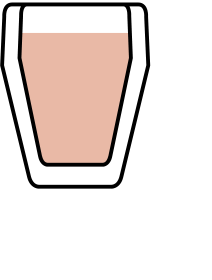- No products in the cart.
BLACK TEA
One of the most known varieties of tea is black tea. It is made from the teaplant camellia sinensis/assamica and amongst the most popular in Europe and North America. After harvest, the tea leafs are allowed to oxidize to the fullest, so that the freshly plucked leafs slowly turn brownish and darker. The flavour is usually stronger, than other types of tea, but can also vary from light and floral himalayan first flush to strong and malty assam teas.

90–96 °C
195–205 °F
195–205 °F

2-3 mn

ROOIBOS TEA
Only a very limited area in the Cedar mountains, in the heart of South Africa is capable of providing the right soil and climate to grow rooibos. Being used for centuries by the local people, the rooibos cultivation and processign started only a few hundred years ago. Now the bush is treated nearly the same way, as it has been for decades. The bush is allowed to ferment after harvest, giving the tea it's disctinctive sweet and red cup.

90–96 °C
195–205 °F
195–205 °F

5-6 mn

GREEN TEA
The freshly plucked leafs of the tea plant camellia sinensis must be heating directly after harvest, to prevent the leafs from oxidization and becoming black tea. Traditionally heating in iron pans in China, the Japanese have developed a hot water steam heating to prevent the tea from burning. Both methods create a distinct flavour for each region, that can vary from light, floral, sweet to full bodied and slightly toasted.

70–80 °C
158–175 °F
158–175 °F

1-2 mn

WHITE TEA
Coming from the same plant as green or black tea, white tea is the one with the least human e ect during production. Only the youngest and most fragile buds are harvested by hand and left to dry under the sun. No oxidization or heating is done to preserve the full natural character of the white tea. The name derives from the fuzzy white appearance of the young tea leaves.

70–80 °C
158–175 °F
158–175 °F

4-6 mn

FRUIT TEA
Commonly used in Europe, dried fruit pieces and other parts of suitable plants have been brewed with hot water into fruit tea – or tisane – for thousands of years. The basic fruit tea consists of apple, orange, hibiscus and rosehip and is given a special twist with whatever exotic fruits and ingredients is added to it. Fruit teas are naturally ca eine free and make the perfect iced teas for children!

90–96 °C
195–205 °F
195–205 °F

5-6 mn






